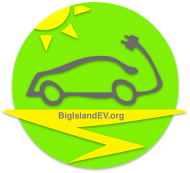Tesla Service
Tesla does not have a service center on the Big Island. Most service calls are handled by Rangers, Tesla service technicians who drive to your location to conduct maintenance and repair service.
NOTE: The Big Island had an on-island service technician until recently. We hope to see the restoration of local service technicians, mainly to ensure that vehicles are serviced promptly. At this time, service technicians from other islands will provide ranger support to Big Island owners as they have done in previous years.
All of our service requests to date have been handled in our garage. Sometimes, the Ranger may drive the car to an alignment/tire shop (we had this done for a tire pressure sensor replacement). In others, a vendor may be called (they called a mobile repair tech to remove a small dent that we noticed when we took delivery of our Model X). Some of our past services include A/C inspection, 12v battery replacement, door rattle repair, door latch inspection, and door trim and door alignment.
Larger repairs, e.g., motor or main battery pack repair, require the car to be shipped to Oahu. Tesla Service will help organize the shipping with Young Brothers if required. You will need to take your car to the pier, where Young Brothers will strap down the car to a pallet or drive the vehicle onto a barge. For warranty-covered repairs, Tesla will provide rental through a local company (yes – you’ll have to learn how to drive an ancient ICE car for the duration of the repair).
Note that Teslas (EVs in general) have low maintenance requirements because they have fewer and less complex components (compared to ICE vehicles). Also, Teslas are subject to over-the-air (OTA) software updates—many fixes and enhancements can be sent wirelessly to your car.
Hawaii Service appointments can be made via your mobile app or by calling (808) 680-9260. Tesla also offers roadside assistance—the toll-free number is (877) 798-3752.
Tip: You can report an issue in your car by pressing the voice command button and saying “Bug Report.” You’ll be able to record a short description. Importantly, Tesla will flag the car’s logs for specific information that can be used for troubleshooting.
Charging your Tesla
Home Charging
You can use the mobile connector provided with each Tesla to charge your car – it can be plugged into 110 or 240v outlets. (110v can work but will take forever.) A 240v (Level 2) charging system in your garage or carport is ideal. At a minimum, you’ll need access to a 240v outlet (something that an electric dryer uses) in the parking area. If you don’t already have one installed, you must work with an electrician.
For maximum convenience, you can purchase a wall connector. This works like the mobile version but is hard-wired and mounted to a wall. You can purchase the wall connectors from Tesla.com and marketplaces like eBay.com. The connectors come with 8ft or 20ft cables. (We recommend the connector with the 20ft cable for maximum convenience.) An electrician should install the connector.
Before installing a wall connector or a new 240v outlet, take note of your parking situation. The charge ports on Tesla vehicles are on the driver’s side by the tail light. This might influence where you park your car or where the charger (or outlet) is installed.
Public Charging
While your Tesla will rarely need to be charged while out and about, you may sometimes need to plug into a public charging station. Your Tesla includes a “J1772” adapter that allows it to use the Level 2 stations available across the island. This adapter attaches to the charger plug and is inserted into the Tesla charge port.
For maximum charging speed, you can purchase a CCS adapter from Tesla.com or marketplaces like eBay.com. This adapter will allow you to use the Fast Chargers. These chargers offer a much higher charge rate over Level 2s, so you can quickly get back on the road. This is highly recommended, especially if you expect to make frequent cross-island trips.
Tips:
- Get the PlugShare, OpConnect, Blink, and ChargePoint apps. These will allow you to access several public chargers on the island and view their status and availability. With PlugShare, you can also provide feedback on the stations. Providing feedback on our experiences helps us maintain the chargers, and reports allow operators to understand issues with their stations.
- PlugShare allows you to see all available chargers, including private ones that owners are offering to others.
- Sign up for accounts at these companies.
- A PlugShare account allows you to provide feedback on stations and report new ones.
- Opconnect, Blink, and ChargePoint accounts will allow you to pre-pay for charging and to put a credit card on file. You’ll also be able to request a ‘smart’ (RFID) card that can speed up access to their stations. The card will allow you to initiate a charge.
- Pay attention to the public charger you intend to use. Level 2 charging stations generally have the J1772 plug. Your Tesla comes with an adapter that you’ll need to insert into the charger’s plug before using it. Keep the adapter (and the mobile charger kit) in your car at all times so that you’ll be ready.
